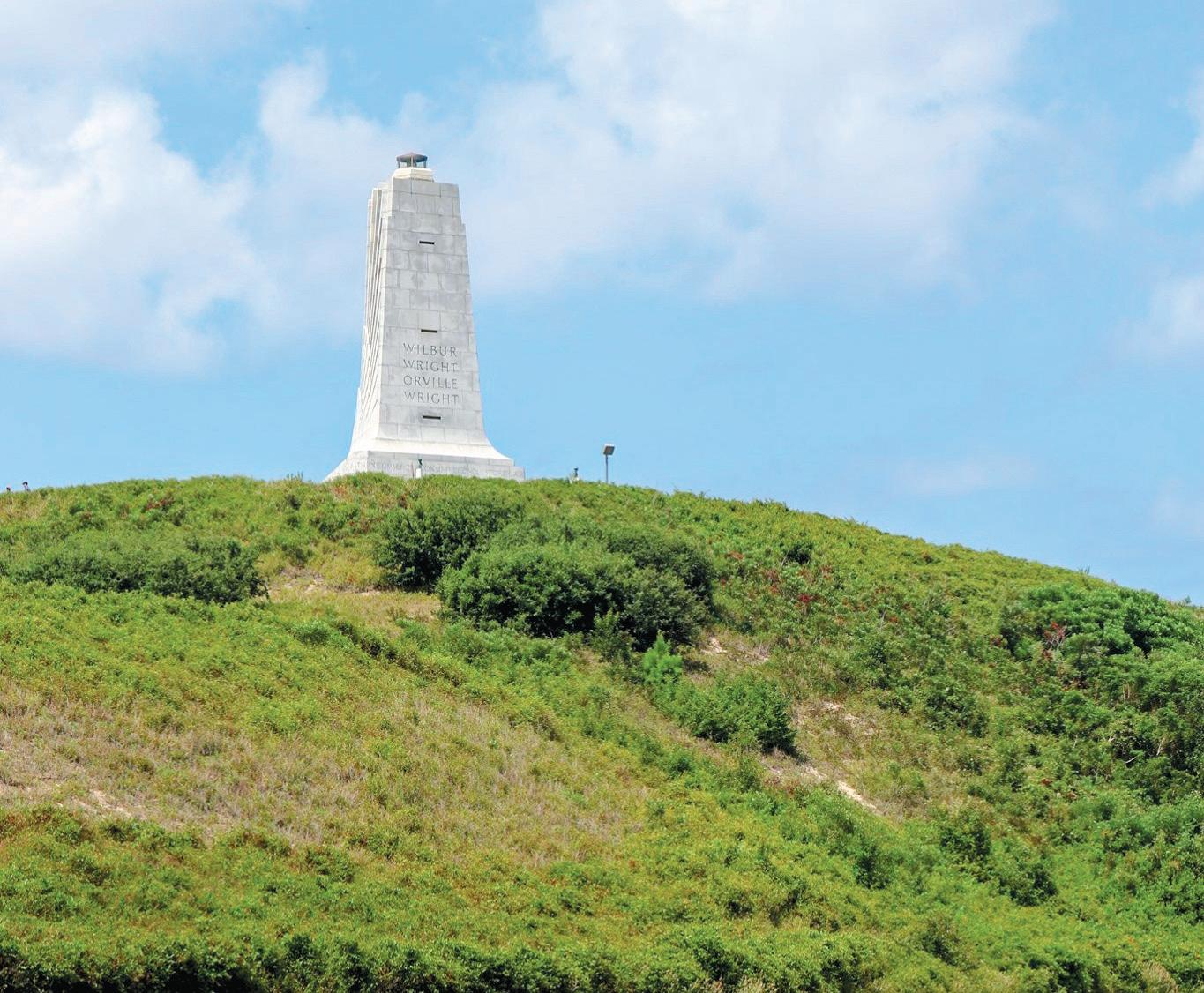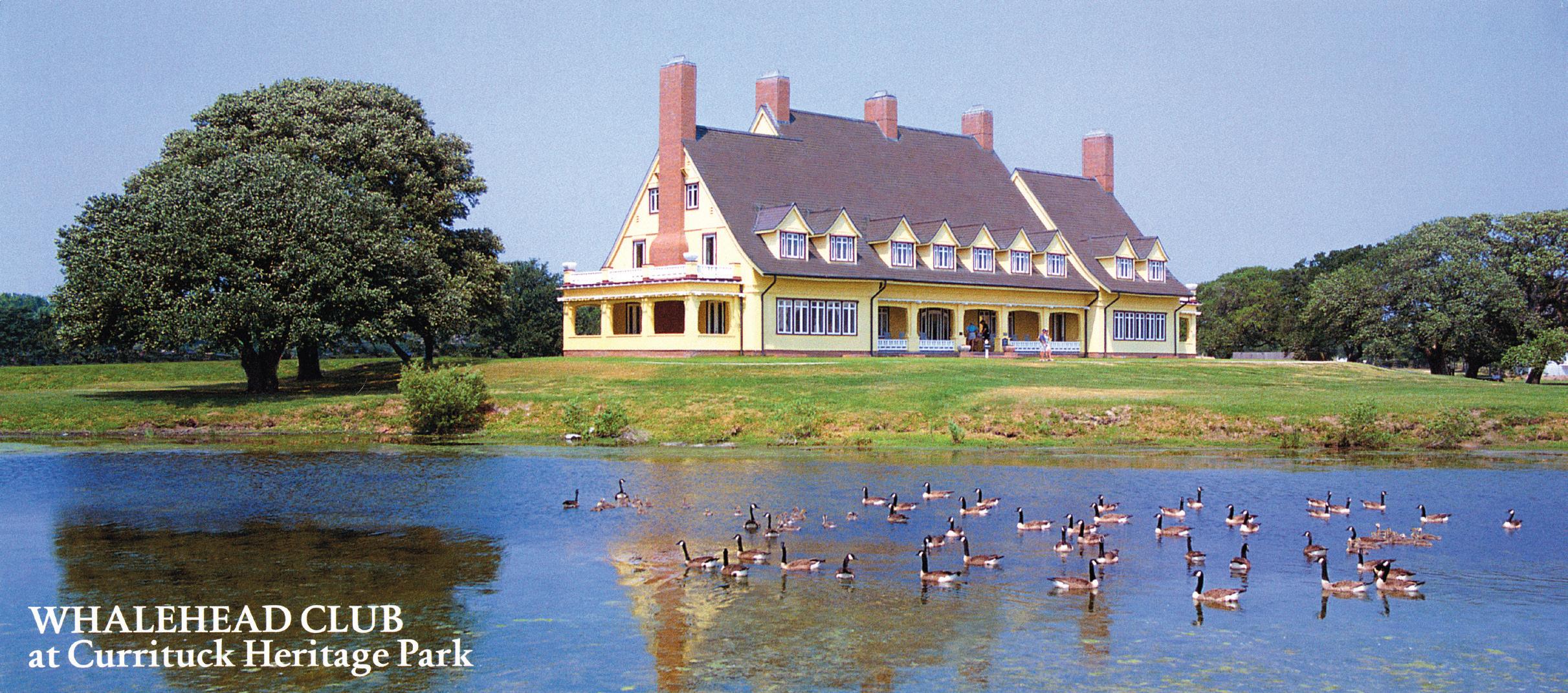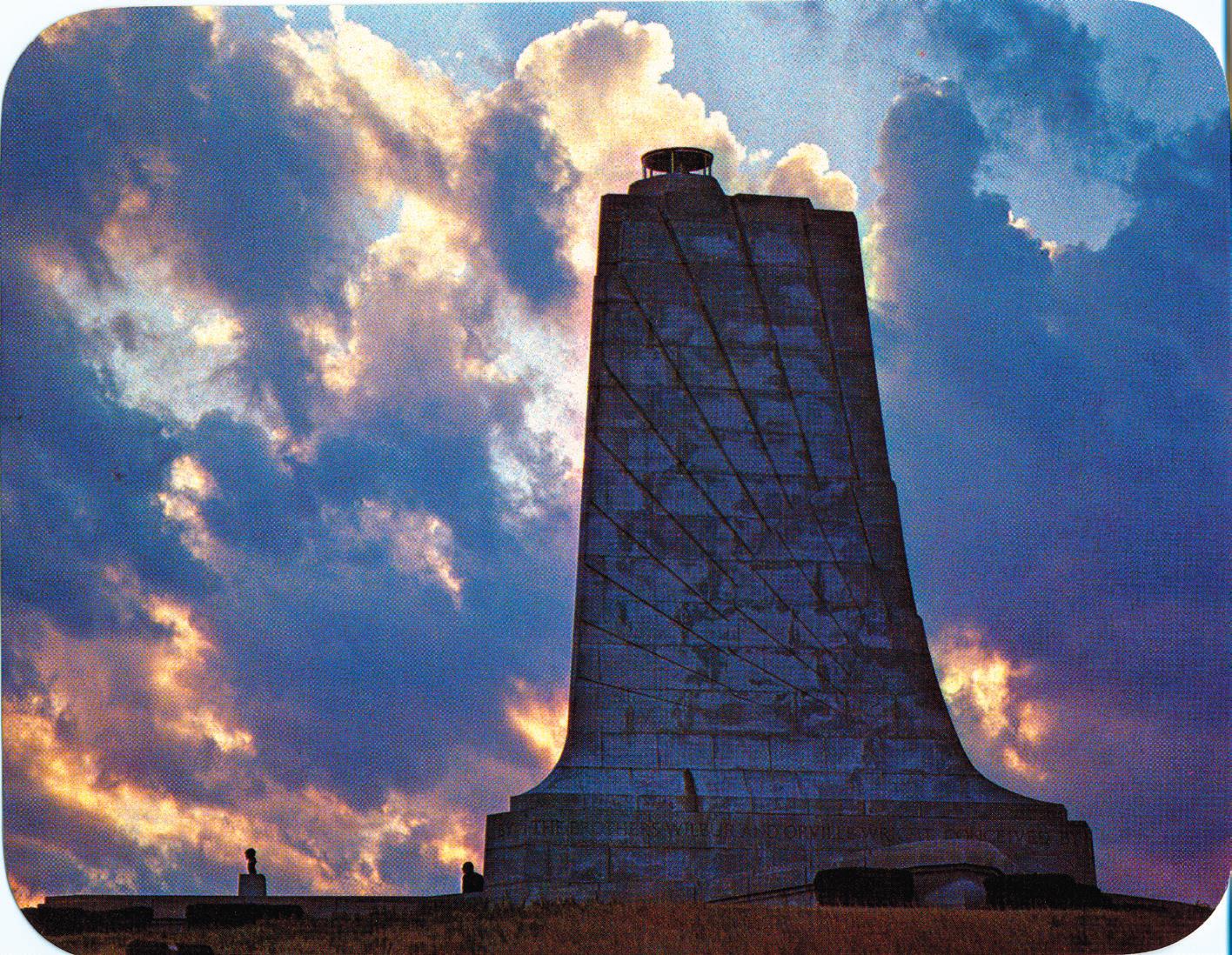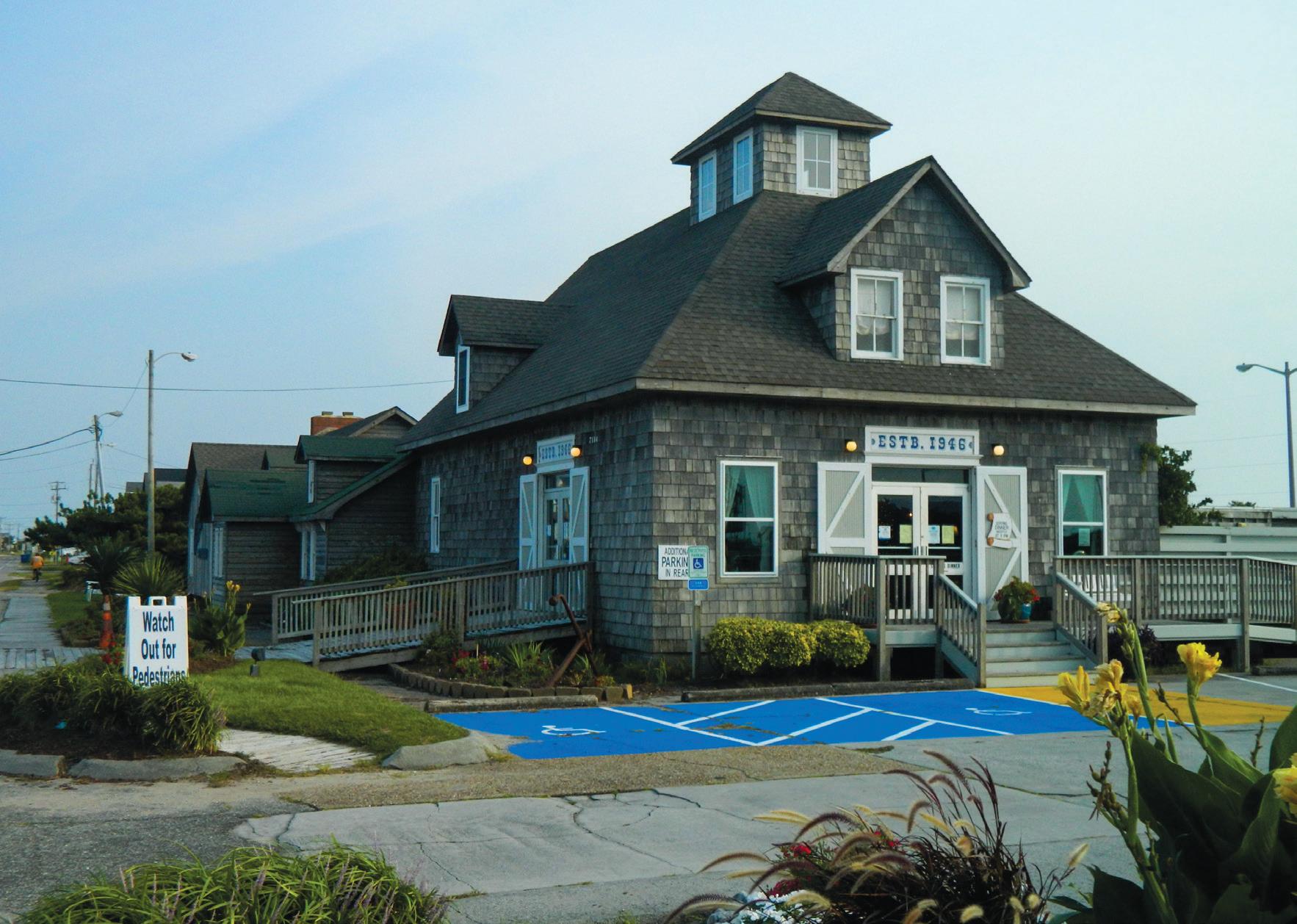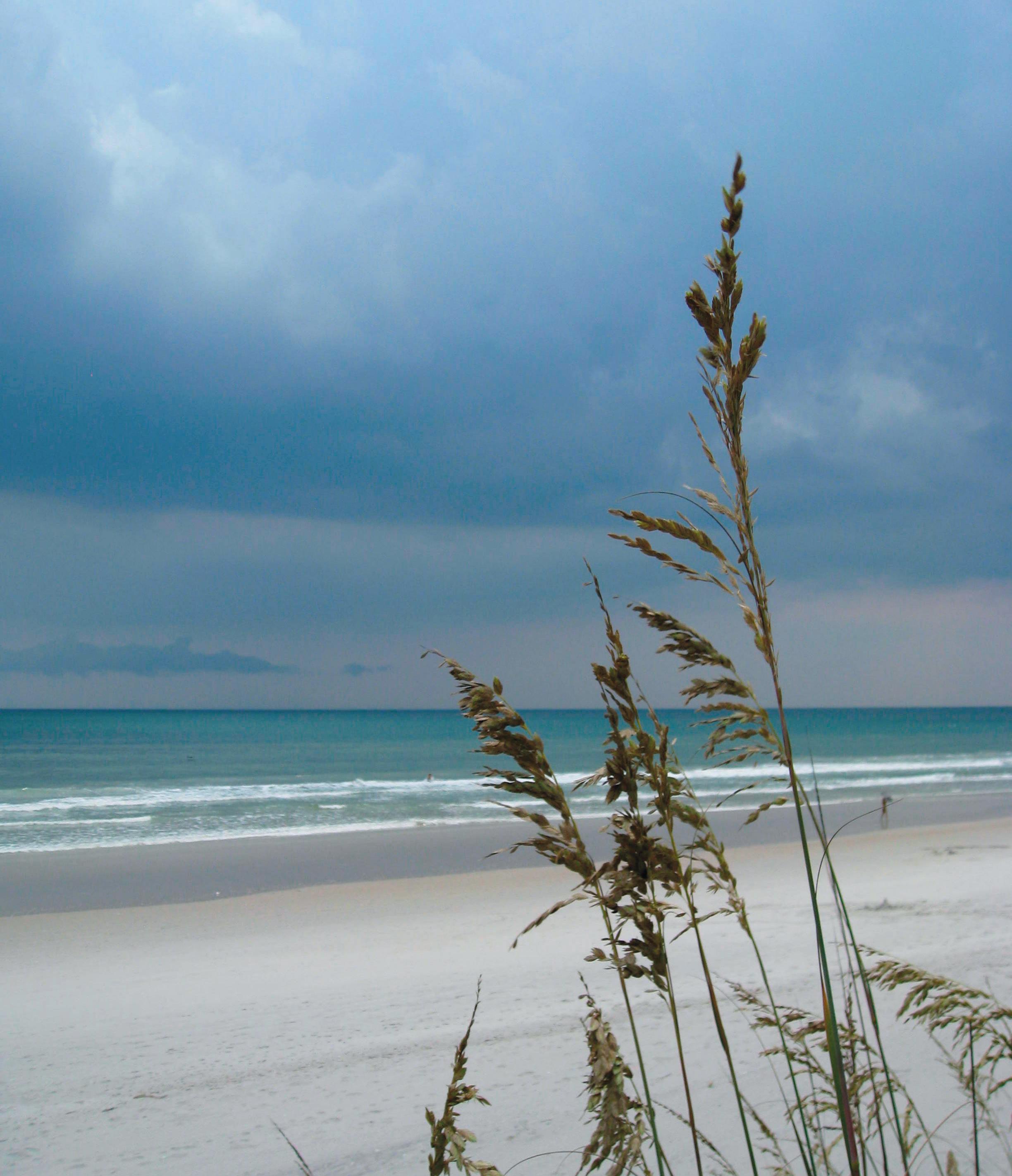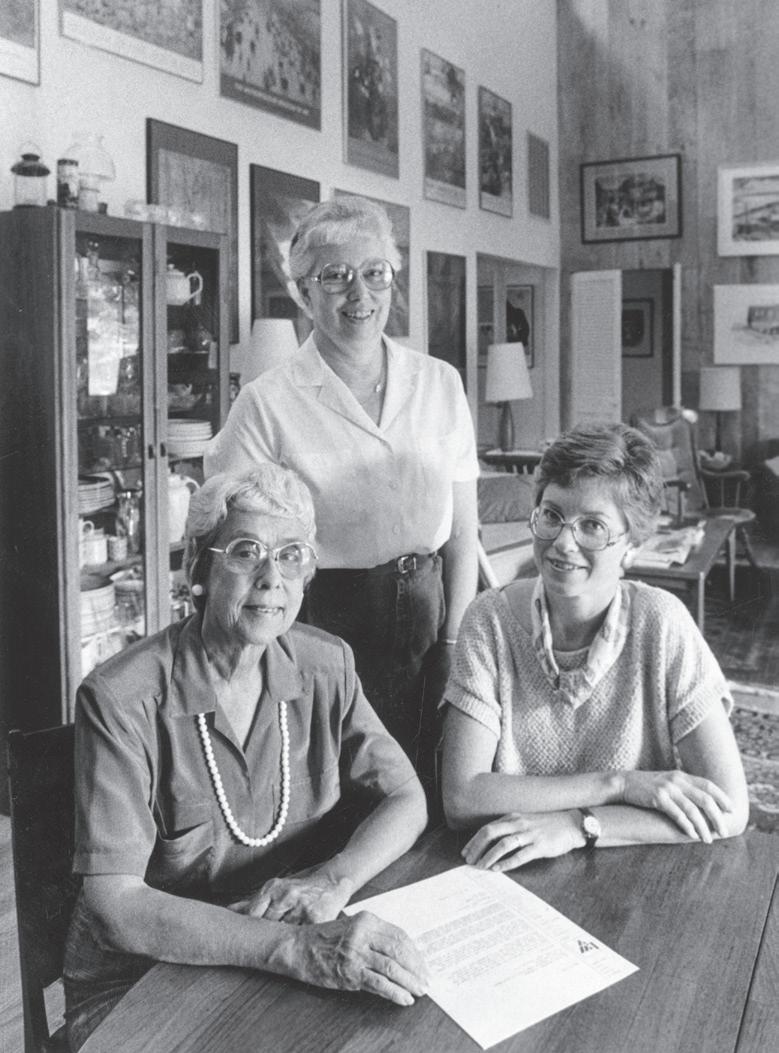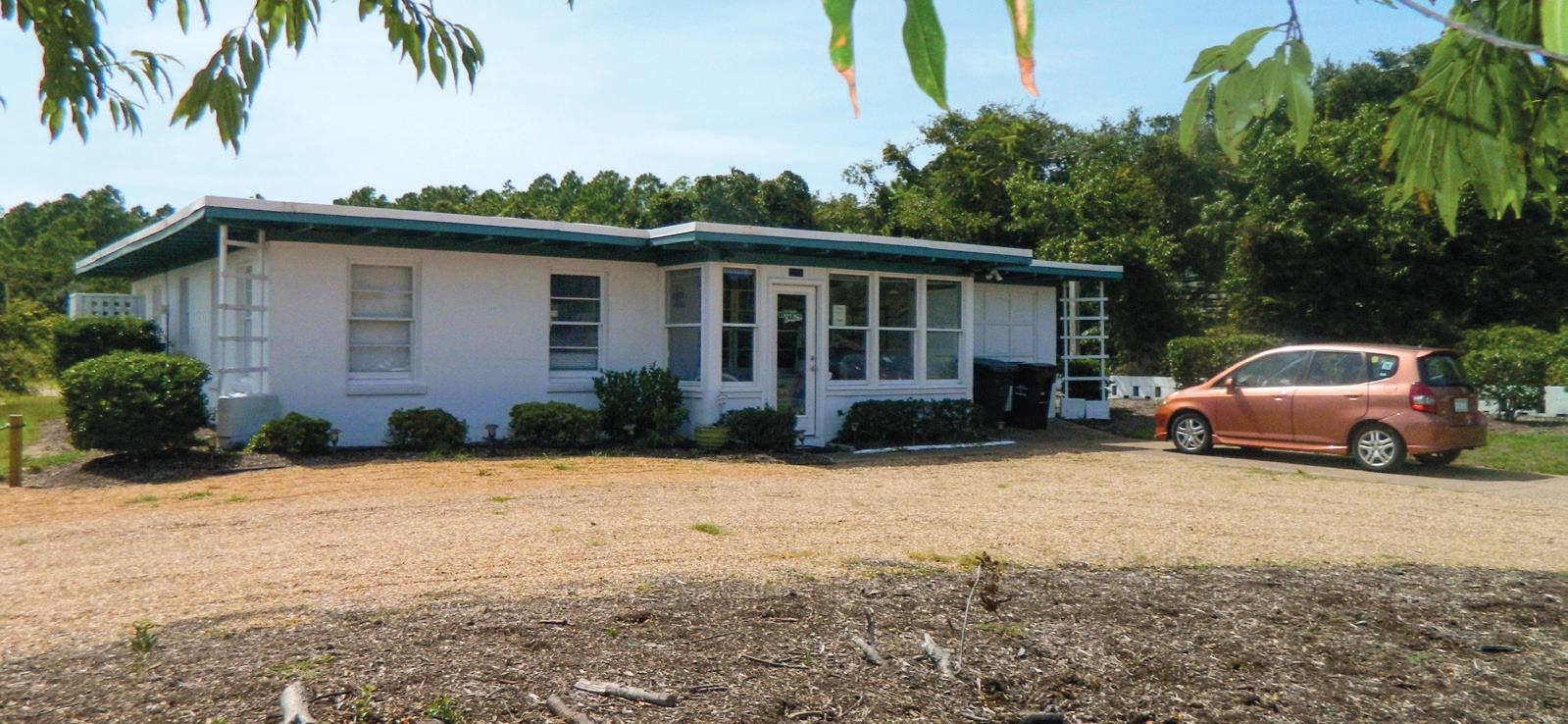
9 minute read
Real estate: Selling the Outer Banks
by Philip S. Ruckle Jr. philip.ruckle@thecoastlandtimes.com
Although Dare County makes up just a small portion of the United States as a whole, it has long been viewed as having prime real estate dating as far back as 1584 when Sir Walter Raleigh sent about 100 men to the New World to establish an English fort and settlement on the north end of Roanoke Island. That site was abandoned and the following year another party of 110 English colonists, including women and some chil dren, came to Roanoke Island in July of 1587. However, when Capt. John White returned in 1590 with much-needed supplies, there was no sign of any colonists.
Settlers had already migrated here from north of the current Virginia state line when King Charles II issued a land grant in 1663. It was around the mid-1600s that a per manent settlement was finally established here. Then, in November of 1789, North Carolina became the 12th state to ratify the United States Constitution. Manteo, a major focal point for business and trade, became a government center in 1873 with the estab lishment of a post office and the town was incorporated 26 years later.
According to the writings of historian David Stick, even with some big-time early property transfers, any organized real estate activity was slow coming to the Outer Banks.
When summer tourists began showing up in the 1830s, there were very few govern ment rules or regulations.
In 1870, using parts of Currituck, Hyde and Tyrrell counties, the General Assembly voted to create Dare County, named for Virginia Dare, who was the first child born of English parents in America. In 1920 the General Assembly took away from Currituck the north banks area of Kitty Hawk Bay to Caffey’s Inlet and added it to Dare.
Roanoke Island was already seeing orga
PHILIP S. RUCKLE JR. PHOTO
Birth of the flat-top cottage, dwellings characterized by their no-pitch roofs and clean, mid-century modern lines that blended in with the dunes, is credited to artist and developer Frank Stick. Popular in an area that is now Southern Shores, 80 of them were built with less than half them remaining. This structure at 13 Skyline Road in Southern Shores is home to The Outer Banks Community Foundation, a public charity established to help meet local needs.
nized land development at the turn of the century and Nags Head, just a short boat ride across the sound from Manteo, was one of the first beach areas eyed for development where individual lots were transferred by metes and bounds descriptions. By the latter part of the century, however, regular summer visitors became more interested in locating their cottages closer to the ocean, and there was more development activity.
As word got out about the Outer Banks paradise, an influx of northern sportsmen soon took place and large tracts of land from Currituck to Ocracoke were put together for private hunting clubs.
Then, in 1926, Allen R. Hueth and Frank Stick came to the Outer Banks from Asbury Park, NJ on a fishing and hunting trip. Falling in love with the place, they envisioned a resort community spread from Kitty Hawk to Hatteras and went to work buying up Outer Banks real estate.
Hueth and Stick purchased an ocean-tobay tract in 1927 began developing it under the name of Virginia Dare Shores. It was the first full-scaled planned real estate develop ment on the Outer Banks with a pavilion designed to host concerts, dances and other programs for excursion patrons coming in by steamboat from Elizabeth City and the Tidewater area of Virginia. In 1928, the pavil ion also served as headquarters for the 25th anniversary of the December 17 first flight commemorative festivities and banquet.
Vehicular access to the Outer Banks was extremely limited, with most roads com posed of sand, clay or mud. The first Roanoke Sound Bridge opened to traffic in 1928, fol lowed by the first Currituck Sound Bridge two years later. In time, the State of North Carolina built an asphalt road connecting the two wooden structure toll bridges, Virginia Dare Trail, opening the area to tourists with more moderate incomes.
It also helped make 16 miles of land from Kitty Hawk to Nags Head prime oceanfront property.
At the end of World War II, Frank Stick acquired an option on a 2,600 acre ocean to sound tract north of the Currituck Sound bridge causeway. David Stick, Frank’s son, noted that his dad paid $30,000 for a fourmile stretch of barren beach, sand hills, wood, swamp and marsh called Southern Shores. Today, that area – incorporated into a town in 1979 – is valued well over $430 million.
According to the younger Stick, back then, paying $25 for a state privilege license was all that was needed to be in the real estate business. There was no requirement to know anything about either real estate or running a business.
Development continued to take place and, a couple of years later, a representative from the North Carolina Association of Realty Boards came to Manteo to discuss the advan tages of local agents forming a Dare County Board of REALTORS®. There was, however, little interest with only about a half dozen becoming members by the mid-1950s when the legislature passed a real estate licensing law.
The Dare County Board of REALTORS® was chartered in November 1962 and has
since become Outer Banks Association of REALTORS®. While the pioneers from those days are no longer with us, there are a few agents around that remember what it was like selling the Outer Banks.
“It was extremely time consuming,” said David Perrot, now with Coldwell Banker Seaside Realty. “To find out what was on the market, we had to drive around to find a sign and call around to find out what was for sale. There was no MLS (Multiple Listing Service). The Coastland Times was our MLS. Then we had to work out the commissions with the list ing agents and it was always different.”
Perrot went on to say before the advent of today’s technology, when agents did find a sign they then looked for a pay phone to start the sales process. Computer systems existed, but were all slow dial-up connections.
“When we did get MLS, by the time it was published, the list was two weeks old,” Perrot continued. “I would spend half a day on the phone looking for properties and half the day in the tax office checking those proper ties. We were real excited when we got a fax machine, but we had the only one. Nobody knew what it was or what it did. “
Perrot said just as technology has changed how transactions are made today, the prices have changed as well. Many of the ocean front lots that once went for $40,000 are now going for close to $600,000 with others approaching a million.
Another change has been the paperwork needed.
“There was a lot less paperwork,” Perrot said.
“Back then there was a one page form,” offered Jackie Ricks-Sample, who has been with Sun Realty since the day that company was formed.
After starting out in rentals in the 1970s, Ricks-Sample moved over to sales and said she has not regretted it.
“We had a contract on one side and all the contingencies on the back,” she explained. “Now contracts are 30 pages.”
Ricks-Sample agreed with Perrot that computers changed everything.
“Not only are MLS properties available quicker,” she explained, “DocuSign® allows multiple parties at locations all over the world to complete a transaction within the same day.”
“I can remember having to make call after
The Steve and Sally Gudas home on Wax Myrtle Trail has been designated a Southern Shores Historic Landmark is one of about three dozen remaining flat-top cottages built from Outer Banks materials by developer Frank Stick in the 1940s to early 1960s.

PHILIP S. RUCKLE JR. PHOTO
call,” she continued. “Then after getting the listing having to sit in front of another agent to interview with them to see if they would be willing to co-broke the listing with me. Then there was the financing, as much as 18 percent.”
In time, Ricks-Sample was able to nego tiate her own contracts, adding that while times were good, there were tough times too. Like having to learn the foreclosure and short sale processes when the market was down in the mid to late 2000s.
As in most places, the market has had its up and down periods.
Johnnie M. Robbins Jr. is another agent that remembers those shorter and simpler contracts.
“I sold a house for just under $90,000 and the contract was one page,” he explained. “All the terms on one side and the instructions on the back. Today with all the disclosures and other stuff, contracts run 25 to 40 pages.”
Less paperwork did not mean there were less sales.
Robbins remembered closing one deal and then mentioning to the buyer that the lot on each side was for sale and available.
“He took them both at $10,000 each,” recalled Robbins. “And a friend that was there with him asked if there were any more lots around. I showed him some and he bought seven lots. So that morning, I got offers to purchase nine lots.”
But not all lots were as easy to show.
“Ocean Sands had some paved roads and there were some roads in Whalehead that were paved,” said Robbins. “But Ocean Sands had a guard gate and to get through the gate, you had to have a reason to be there.”
Although there were some paved roads in Ocean Sands and at Whalehead, everything else was sand and required four wheel drive. Robbins added that some of the Virginia developers drove down from Sandbridge Beach in Virginia along the oceanfront.
“The paved road ended at Wink’s Store,” explained Robbins. “Whalehead has the first paved roads and there were clay roads to Ocean Sands, but you needed four wheel drive to get to Whalehead.”
Once the road to Duck and beyond was paved in the late 1970s Corolla became a hot spot when Dick Brindley developed Corolla Light and property sales all over the northern beaches exploded.
But the agents will tell you there is more to real estate sales than just the property transfers.
“It was a good time,” said Ricks-Sample. “The beach was smaller and it was easier to know the property inventory and a lot of the people involved. Some of us were best friends.”
And friendships have become a key part of life on the Outer Banks.
In addition, Robbins recalls meeting Jim Bailey, a retiree from Ohio who was look ing for a place to live and a job. Robbins introduced him to Francis Meekins, long time owner and publisher of The Coastland Times, and Bailey was soon selling advertis ing up and down the beach. After a couple of months, Robbins ran into Bailey and asked how he was doing. Bailey said he was doing well and in fact had more friends here on the Outer Banks in two months than he left in Ohio after living there all his life.

